Email sales@AllianceChemical.com for 24/7 Expert Support
-
512-365-6838
-
Ethylene Glycol 60/40
Category : Glycols
$18.00
Liquid error (snippets/product-blocks line 100): divided by 0
Off
Unit price
/
Shipping Notice: Possible Hazmat Fees
💡 Smart Shipping Tip: Quart & Liter Sizes Often Avoid Hazmat Fees
This size may be classified as hazmat and can incur additional carrier fees. See shipping guide
- ✅ Good news: 1 Quart containers qualify as "Limited Quantity" and bypass hazmat rules
- 💡 Pro tip: Order multiple 1 Quart containers to avoid hazmat fees entirely
- 💰 Hazmat fees can get expensive - especially for larger containers (carrier charges, not our markup)
- 🚚 Ground shipping only - no expedited options for sizes over 1 Qt/1L
Required by 49 CFR § 173.150 for chemical containers larger than 1 quart. Actual fees shown at checkout. View our complete shipping guide →
✅ Great Choice! No Hazmat Fees
1 Quart containers qualify as "Limited Quantity" and avoid hazmat shipping fees.
- 🚀 Faster shipping: Eligible for expedited shipping options including air transport
- 💰 No hazmat fees: Ships as "Limited Quantity" per DOT regulations
- 📦 Convenient size: Perfect for testing or smaller applications
- ♻️ Smart choice: Order multiple quarts to get the volume you need without hazmat charges
Exempted under 49 CFR § 173.150 Limited Quantity provisions for containers ≤1 liter/quart. Learn more in our shipping guide →
Quantity
Size:
Variation:
-
$18.00Delivery every$17.10
-
$29.00Delivery every$27.55
-
$56.00Delivery every$53.20
-
$100.00Delivery every$95.00
-
$29.00Delivery every$27.55
-
$55.00Delivery every$52.25
-
$100.00Delivery every$95.00
-
$3,550.00Delivery every$3,372.50
-
$95.66Delivery every$90.88
-
$363.39Delivery every$345.22
-
$3,300.00Delivery every$3,135.00
-
$265.00Delivery every$251.75
-
$655.00Delivery every$622.25
-
$2,550.00Delivery every$2,422.50
-
$3,200.00Delivery every$3,040.00
-
$3,648.00Delivery every$3,465.60
$18.00
Liquid error (snippets/product-sticky-blocks line 69): divided by 0
Off
Unit price
/
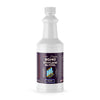
Ethylene Glycol 60/40
$18.00
Liquid error (snippets/sticky-product line 56): divided by 0
Off
Unit price
/
Size:
Variation:
-
$18.00Delivery every$17.10
-
$29.00Delivery every$27.55
-
$56.00Delivery every$53.20
-
$100.00Delivery every$95.00
-
$29.00Delivery every$27.55
-
$55.00Delivery every$52.25
-
$100.00Delivery every$95.00
-
$3,550.00Delivery every$3,372.50
-
$95.66Delivery every$90.88
-
$363.39Delivery every$345.22
-
$3,300.00Delivery every$3,135.00
-
$265.00Delivery every$251.75
-
$655.00Delivery every$622.25
-
$2,550.00Delivery every$2,422.50
-
$3,200.00Delivery every$3,040.00
-
$3,648.00Delivery every$3,465.60
Ask a question
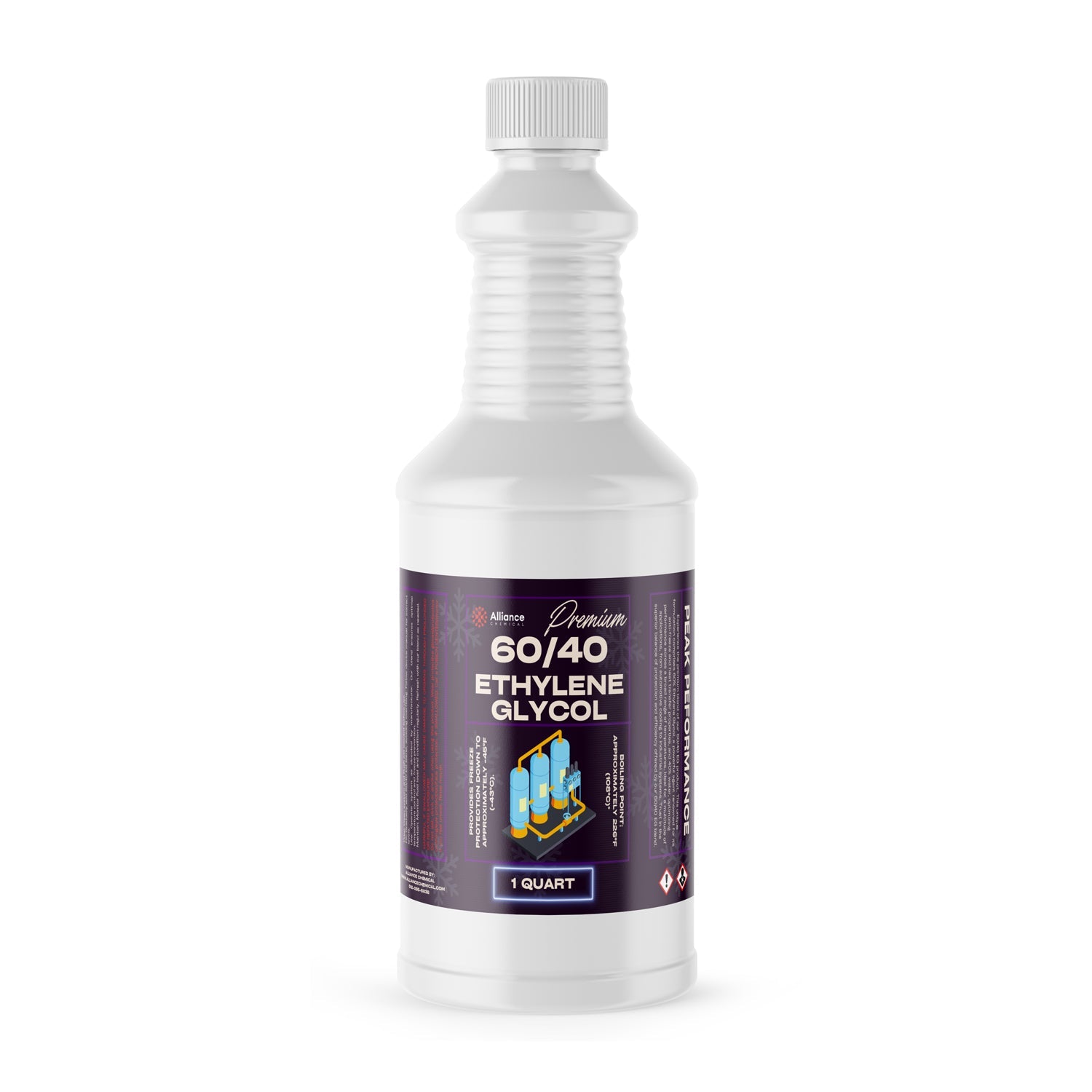
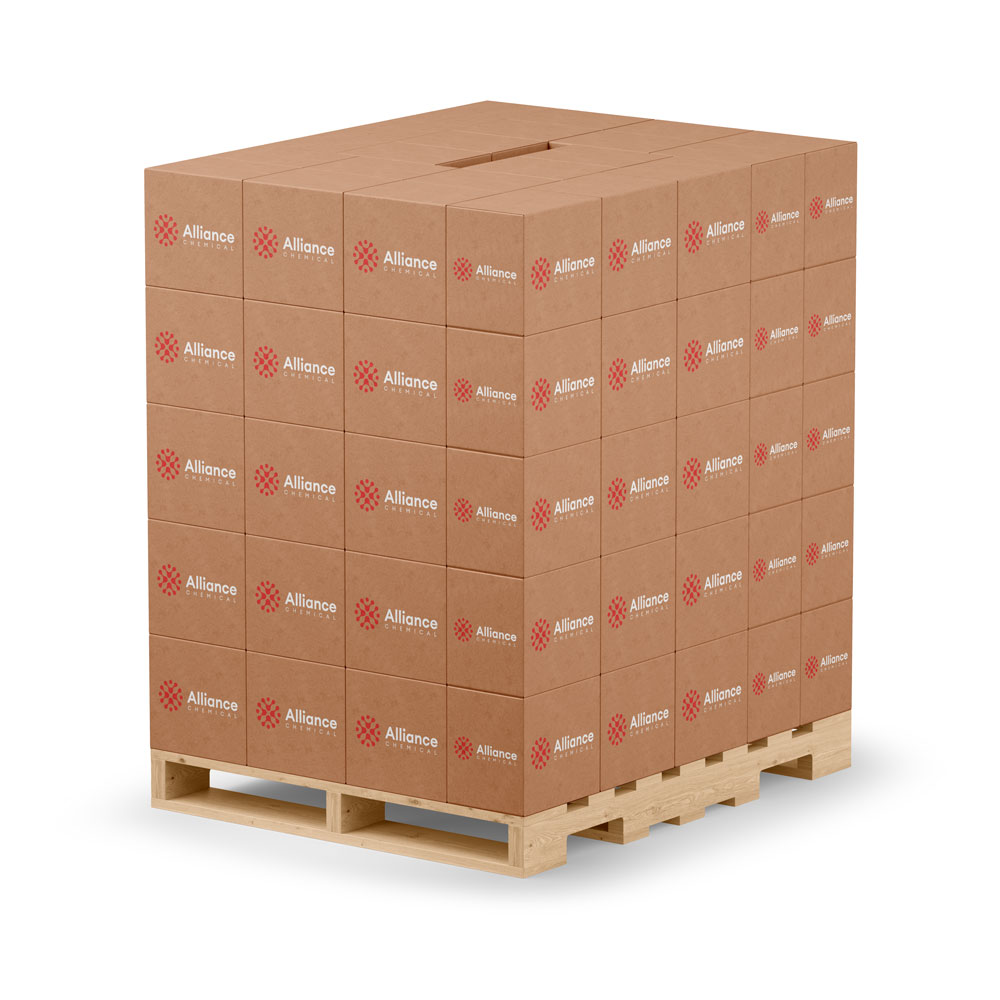

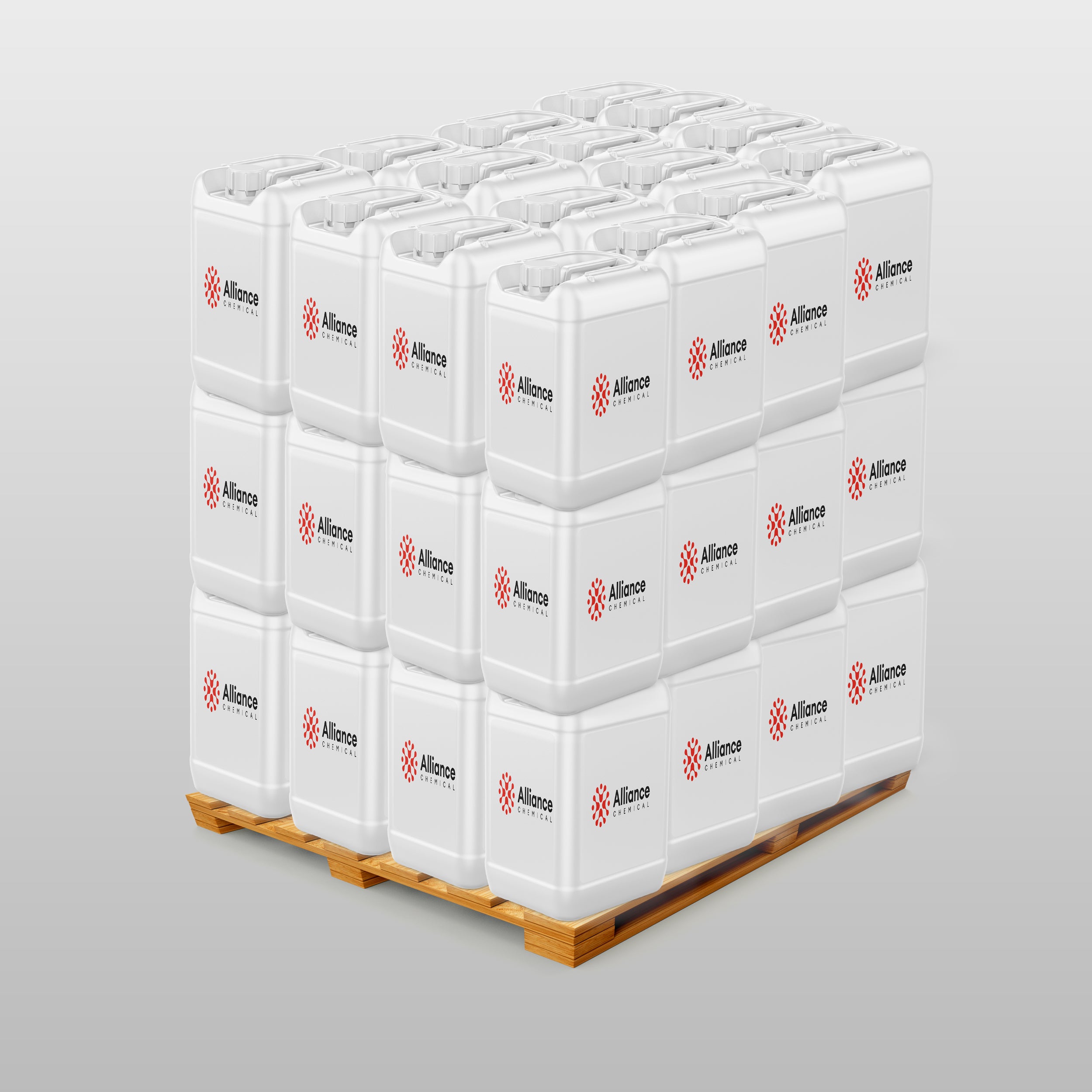
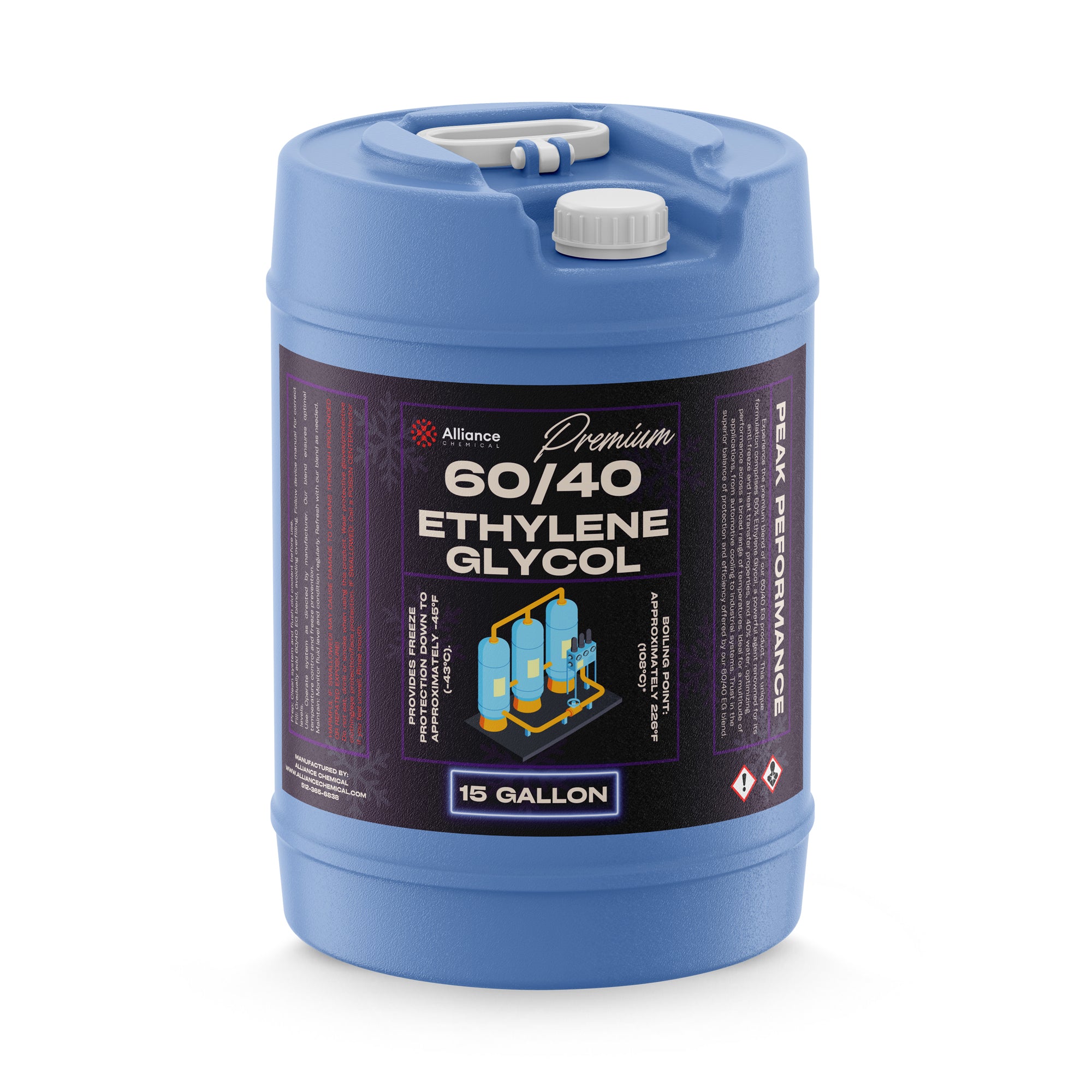
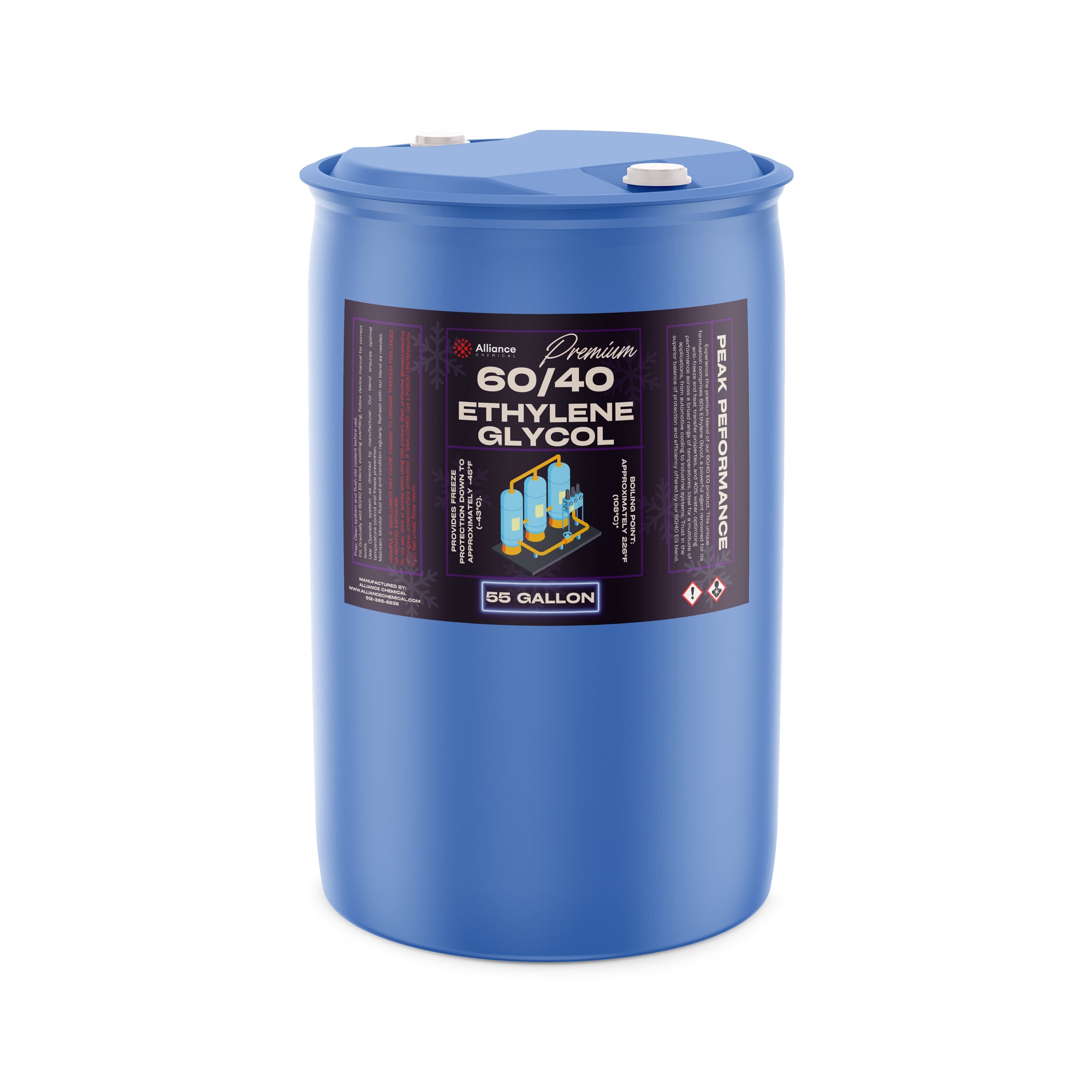
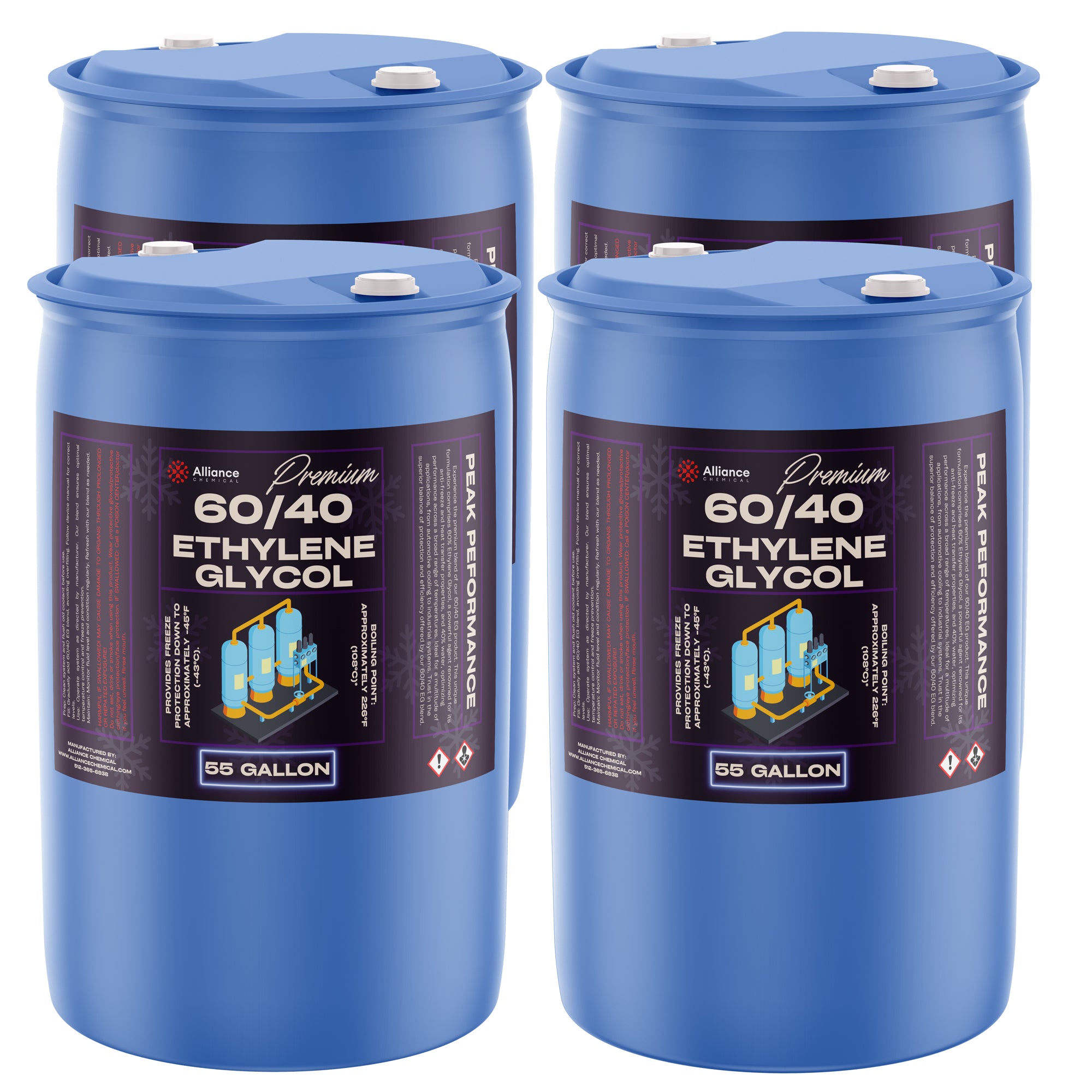
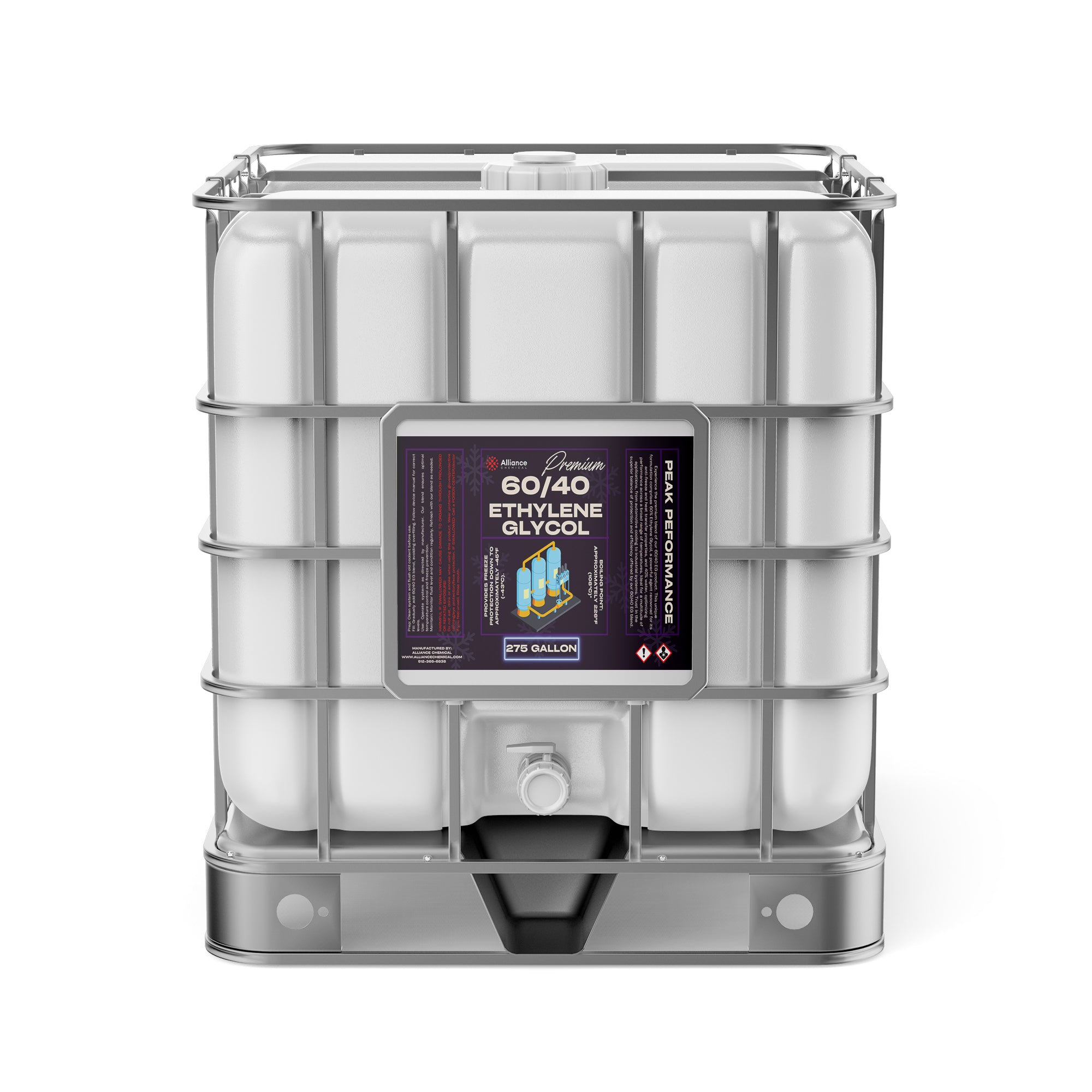
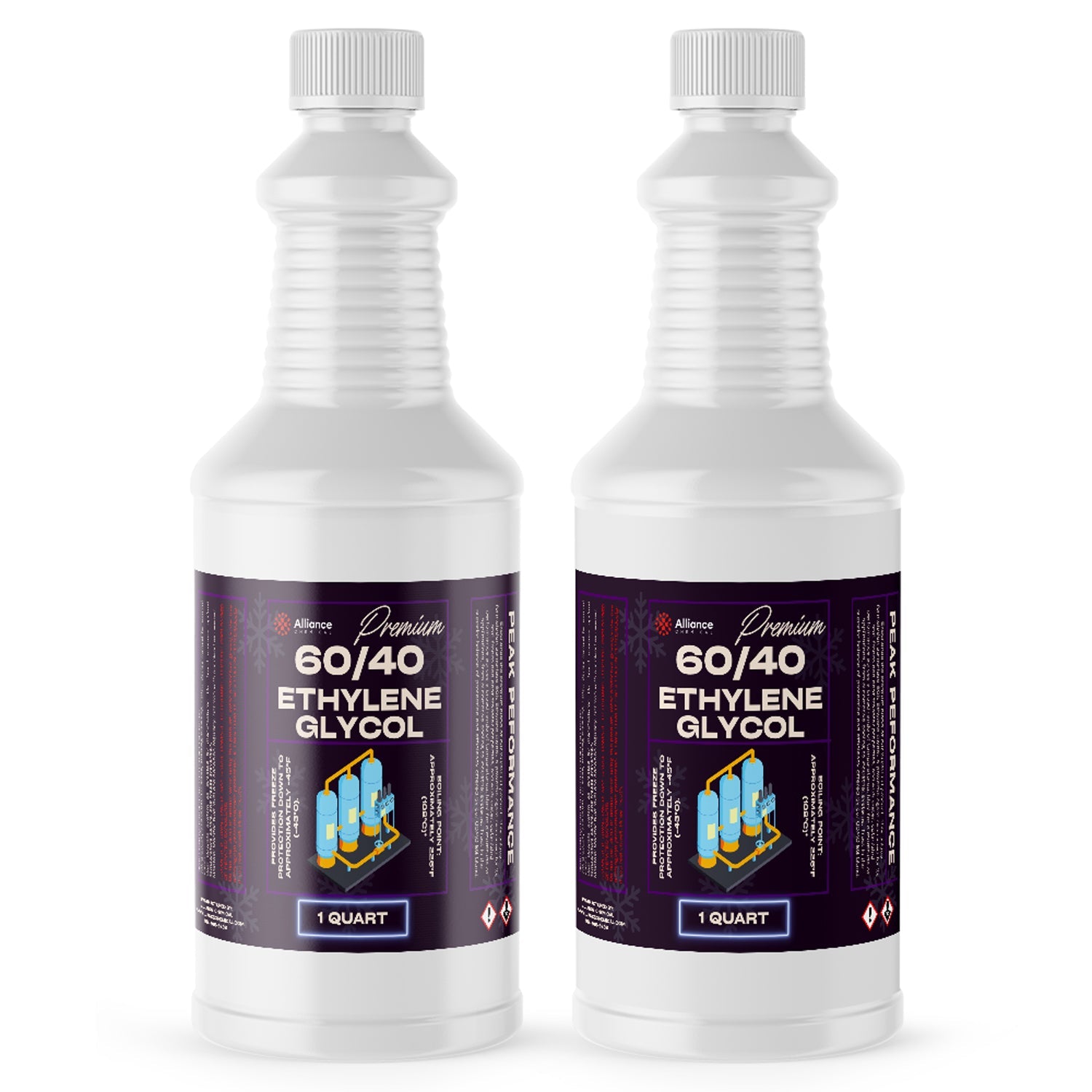
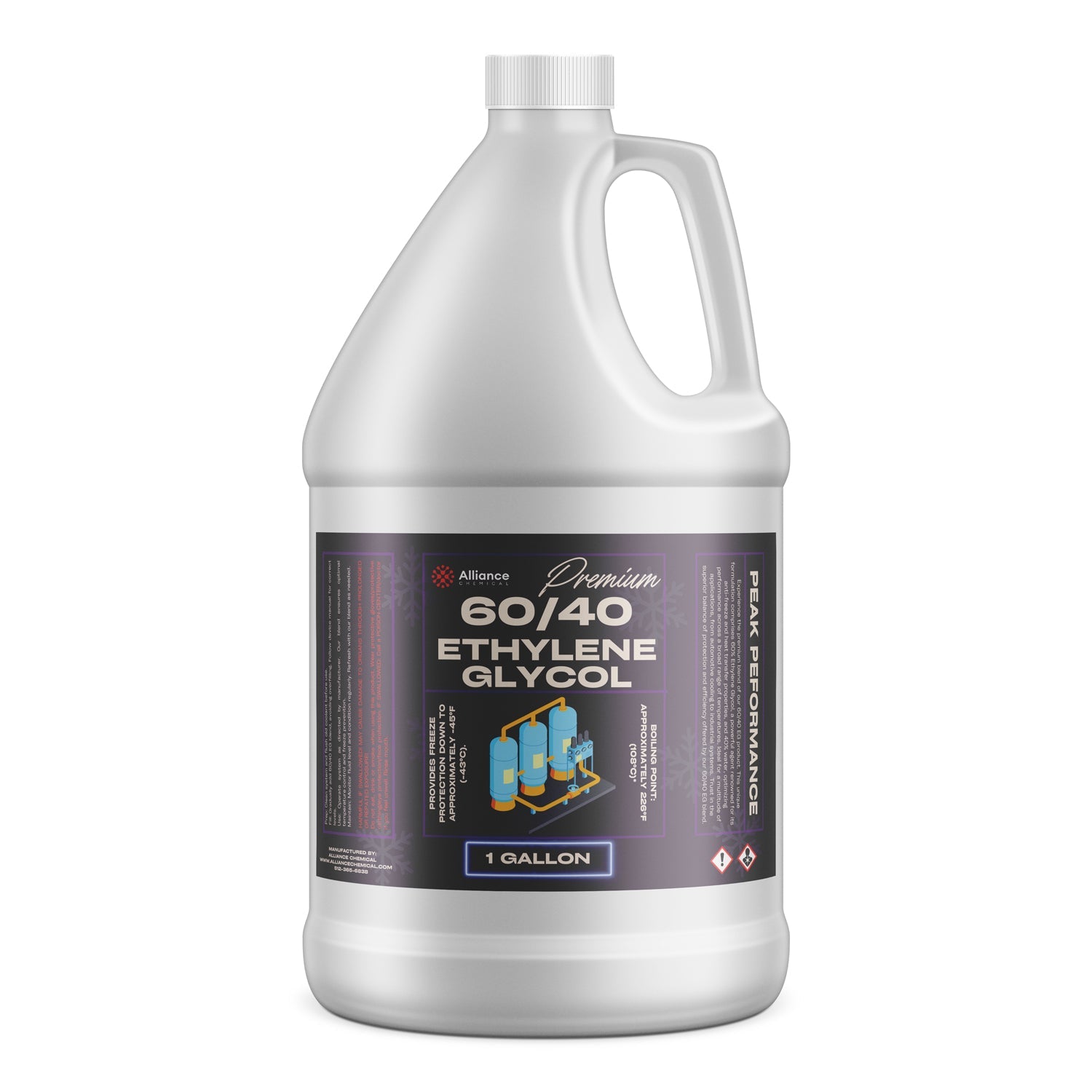
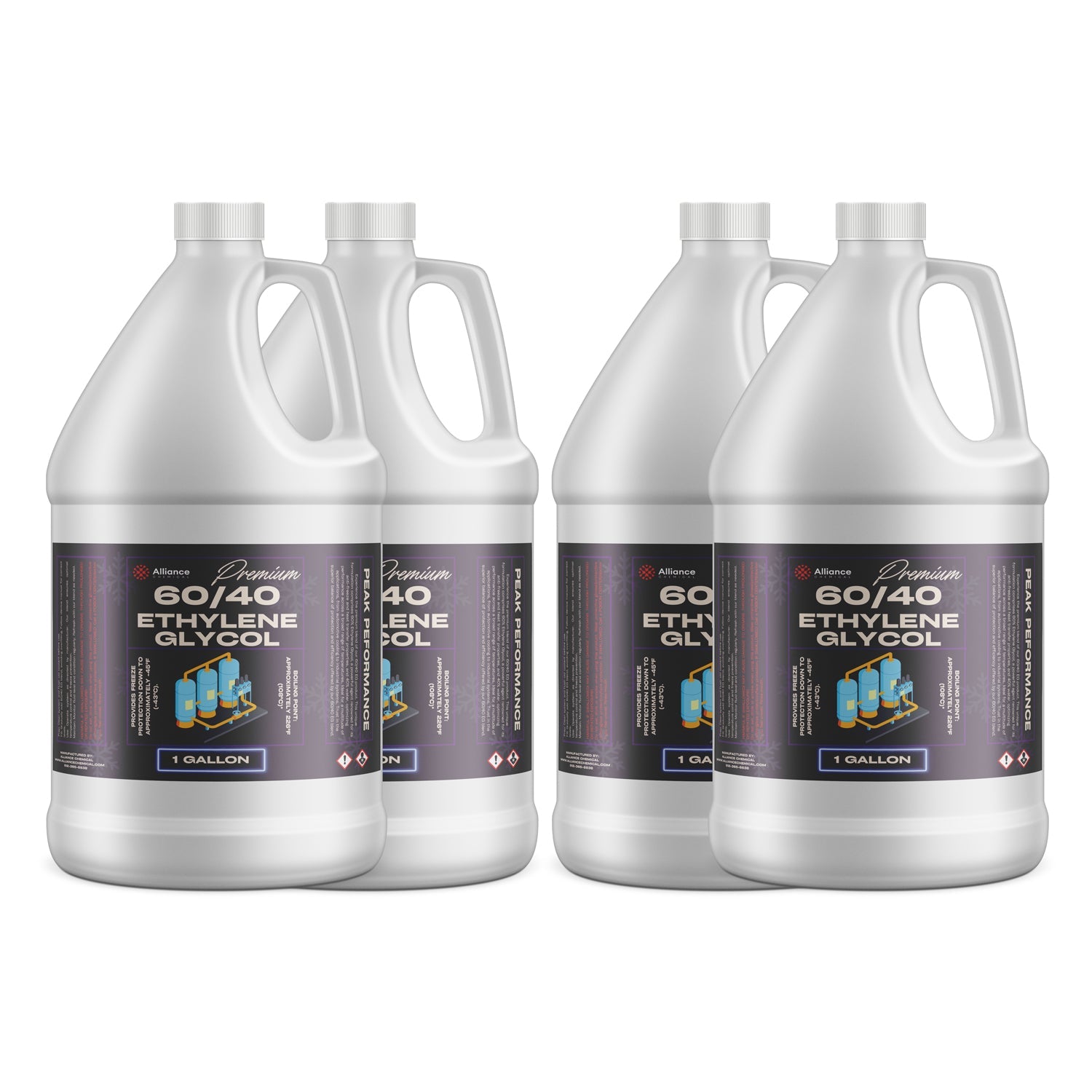
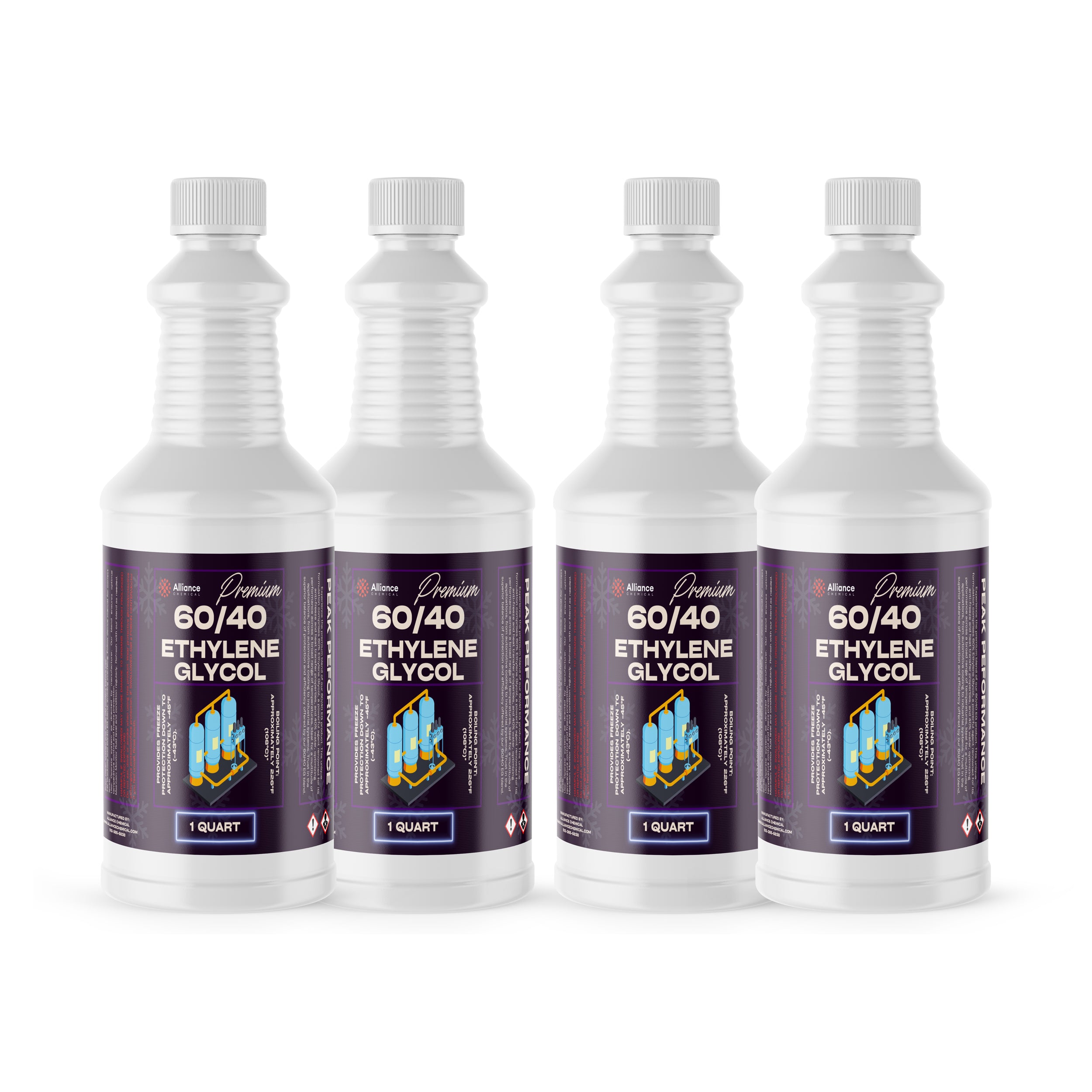
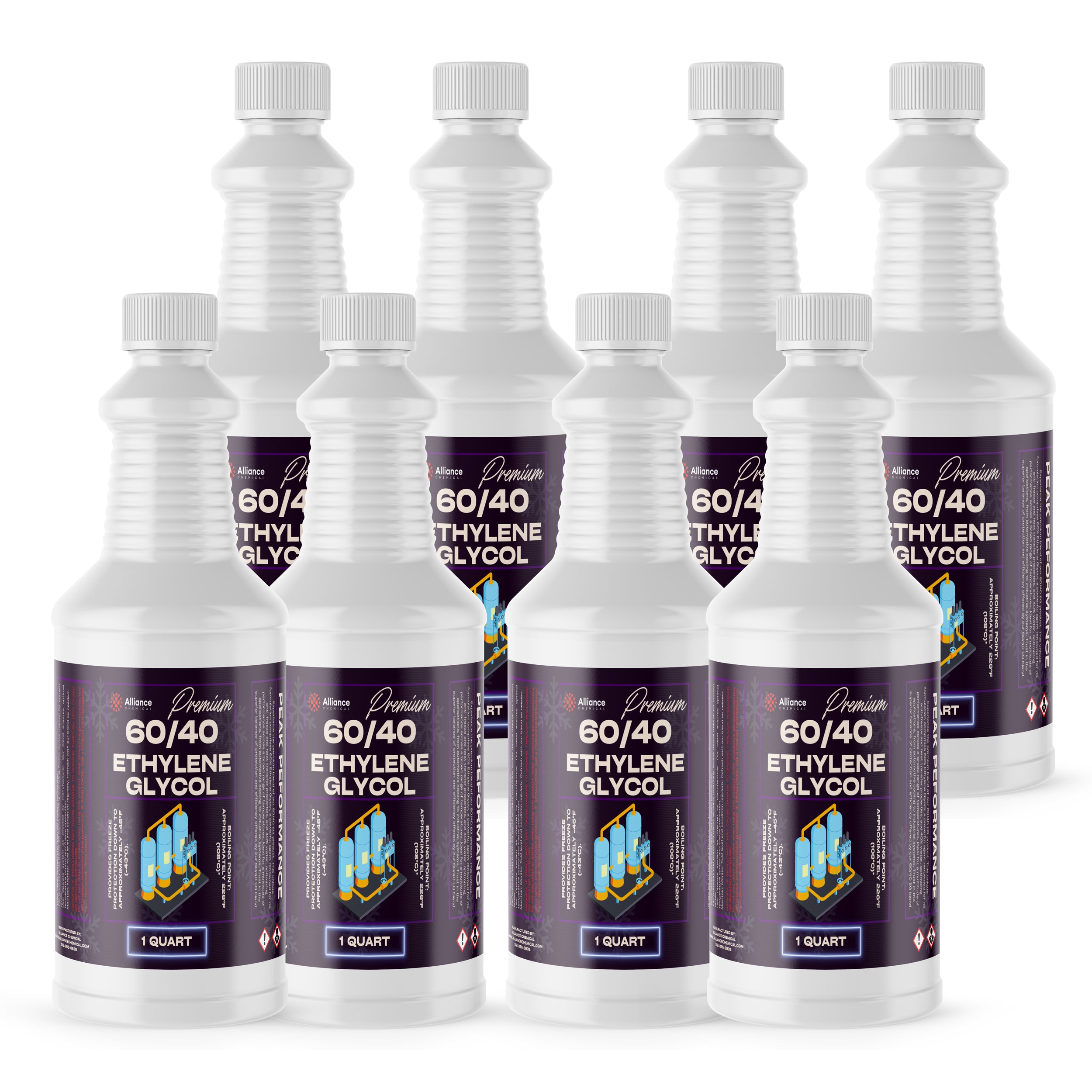
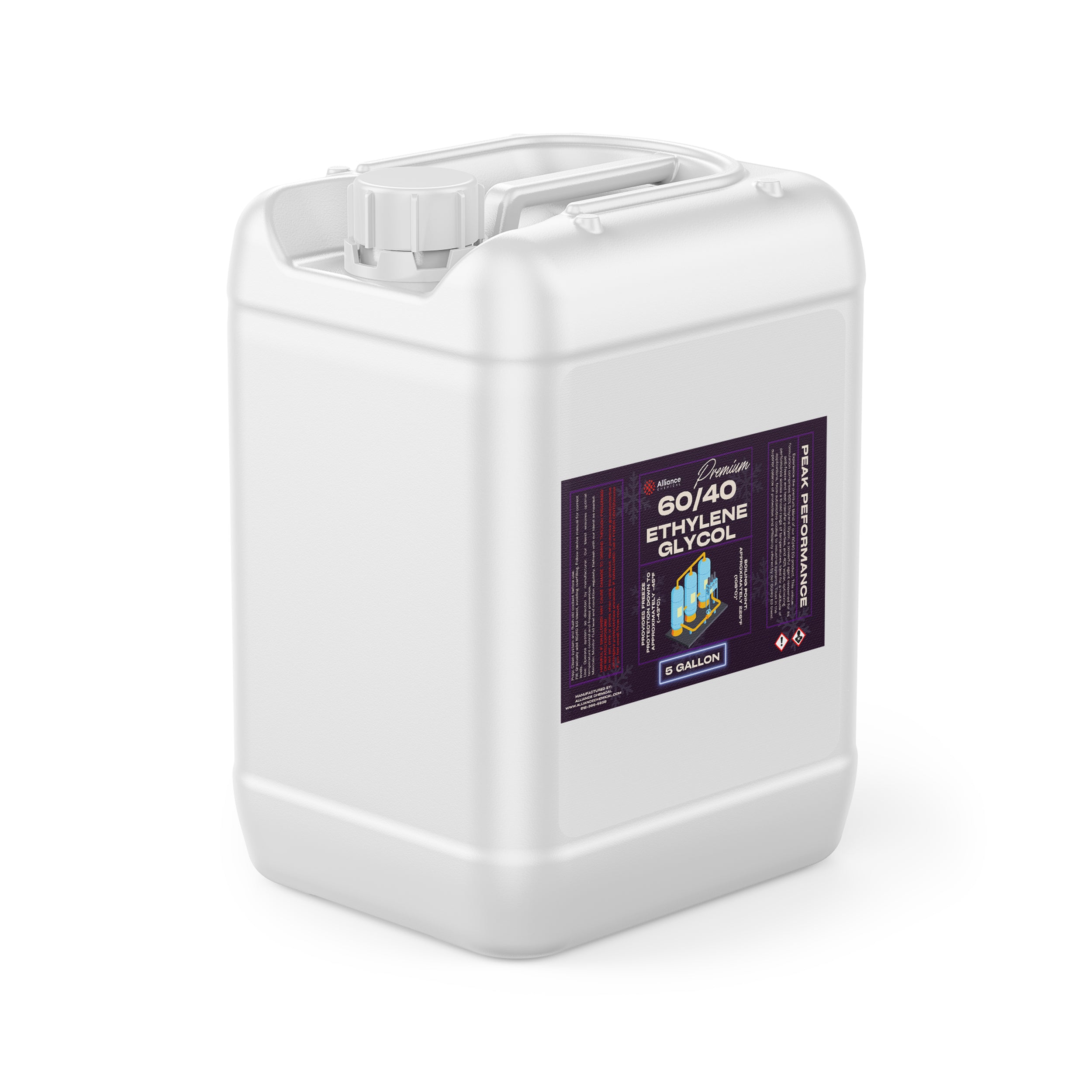
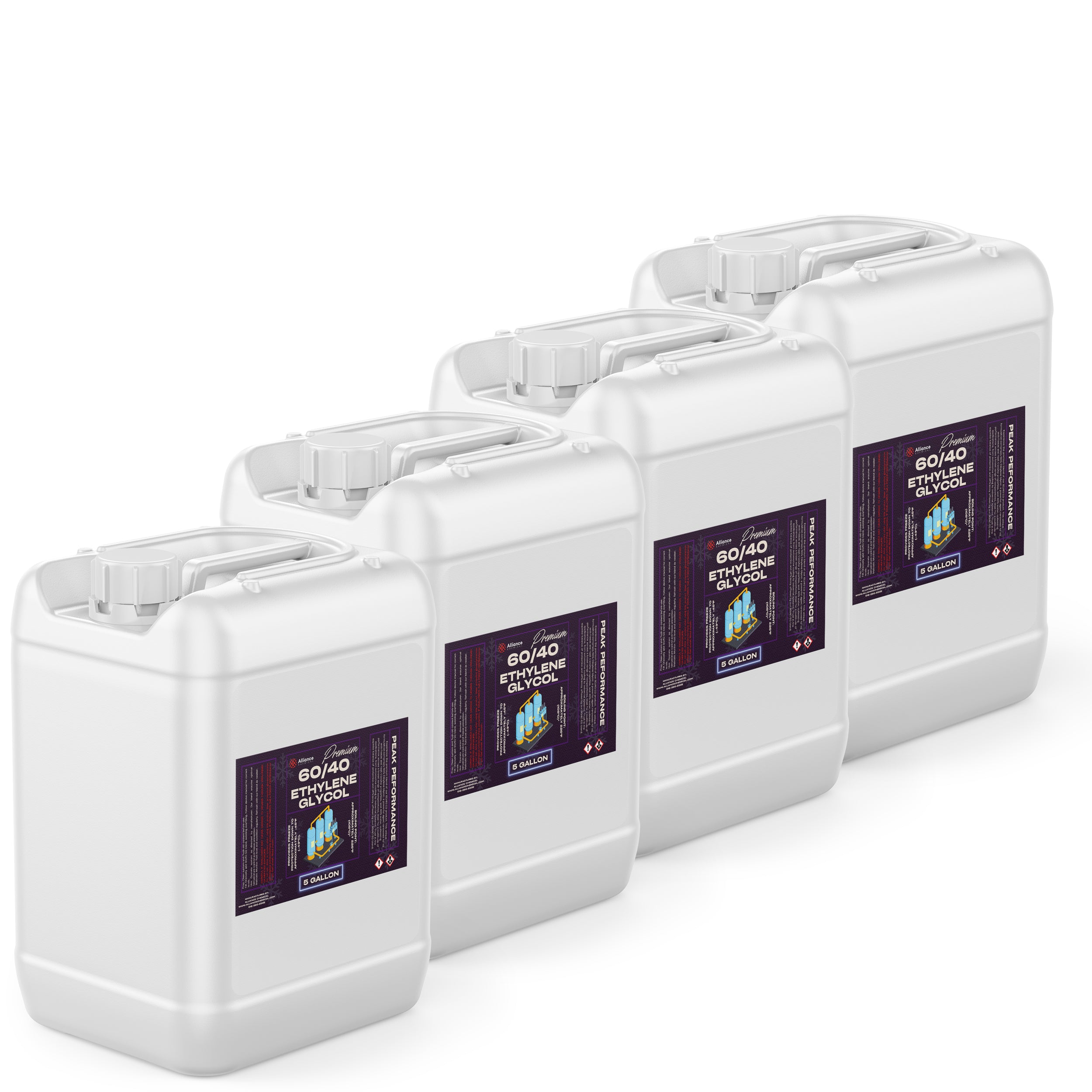

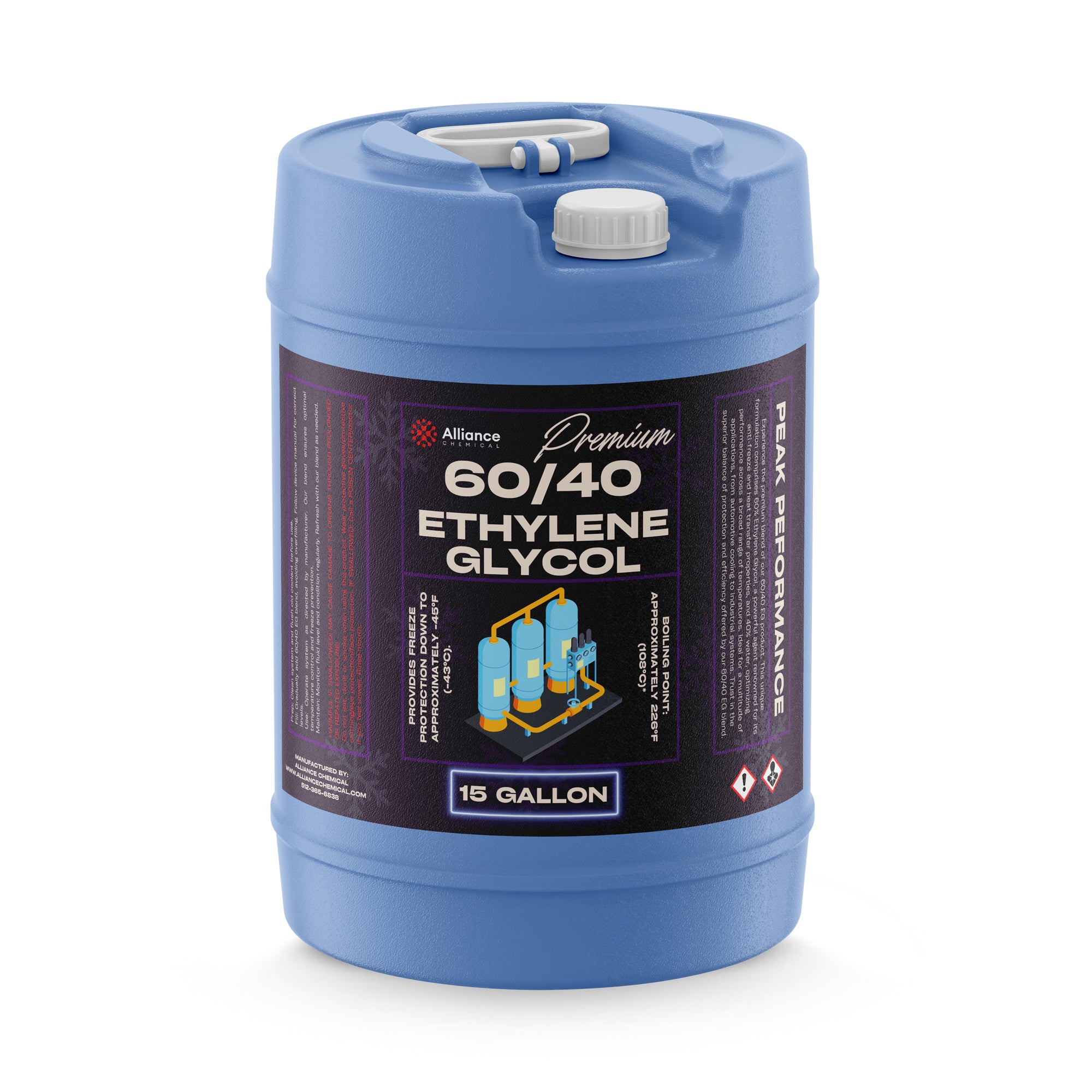
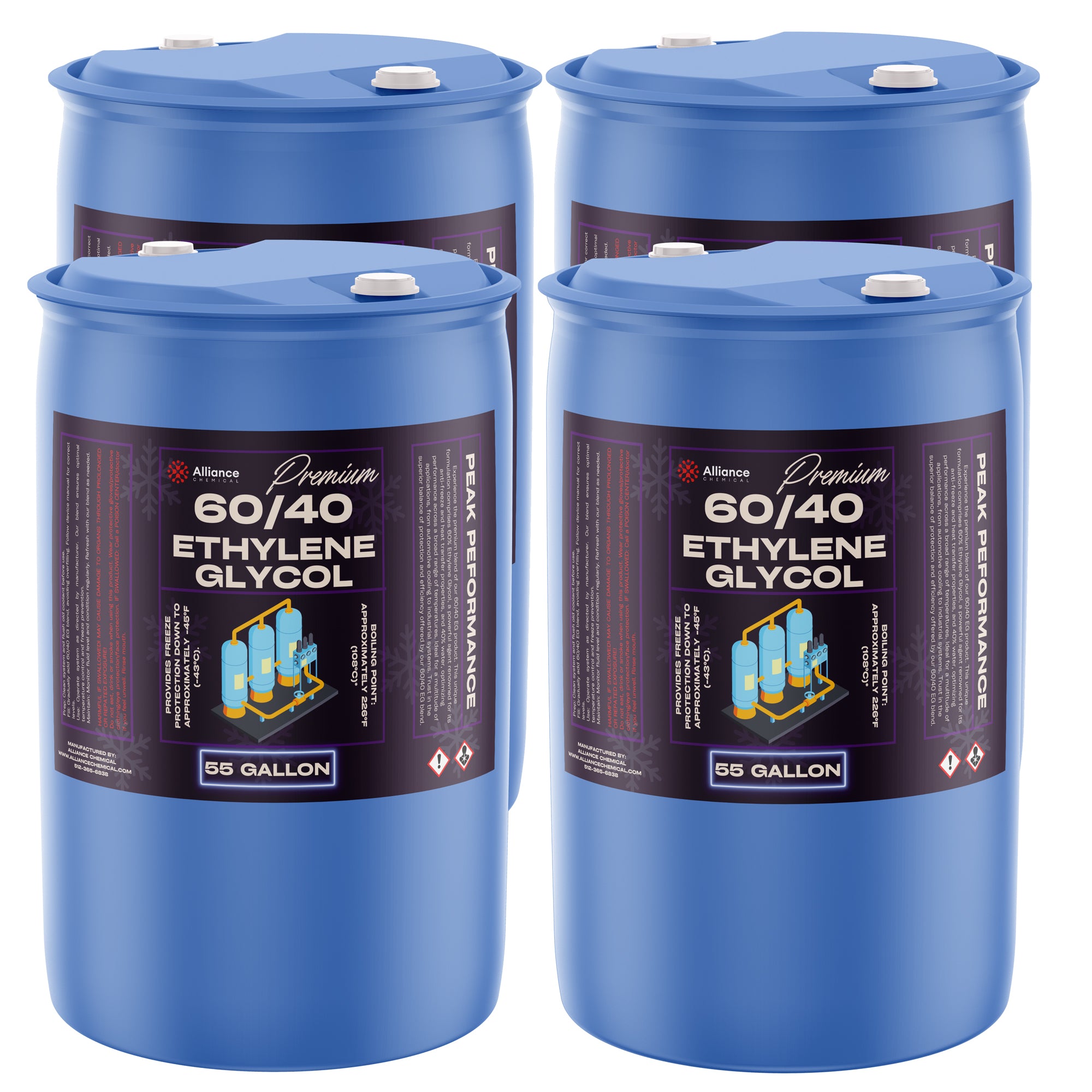

- Description
- Product Documents
Product Overview
Ethylene Glycol 60/40 is a precisely formulated mixture of ethylene glycol (C₂H₆O₂) and water, designed for a range of industrial applications. This solution provides excellent thermal stability and a low freezing point, enabling reliable performance in mission-critical heat transfer systems and antifreeze formulations. The composition is designed to maintain consistent viscosity and flow characteristics across varying operating temperatures, supporting efficient pumping and heat removal in automotive cooling loops, industrial chillers, and process equipment. Our Technical Grade grade is manufactured to stringent quality standards, ensuring predictable compatibility with materials commonly used in industrial facilities.
In addition to its primary role as a coolant and heat transfer medium, Ethylene Glycol 60/40 serves as a versatile solvent and humectant in chemical processing, cosmetics formulations, and de-icing operations. The product is supplied with comprehensive analytical data, including assay, impurity profiles, and heavy metals limits, enabling rigorous QA/QC in regulated environments. The formulation is optimized for controlled aging and minimal after-use residue, supporting long service intervals and dependable performance in harsh environments.
Key Properties
- Chemical Formula: C₂H₆O₂ (ethanol? No—ethylene glycol; correctly written as C₂H₆O₂)
- CAS: 107-21-1
- Molecular Weight: 62.07 g/mol
- Appearance: Colorless, viscous liquid
- Odor: Slightly sweet odor
- Boiling Point: 197.3°C
- Freezing Point: -51°C
- Specific Gravity (20°C): 1.06 – 1.065 (typical 1.0625)
- Density (25°C): 1.115 g/mL
- Vapor Pressure (20°C): 0.06 mmHg
- Viscosity (25°C): 20.1 cP
- Refractive Index (20°C): 1.431
- Residue After Ignition: ≤ 0.15% (typical 0.05%)
Common Applications
- Antifreeze Agent: Automotive cooling systems use Ethylene Glycol 60/40 to lower the coolant freezing point, protect against engine freezing, and provide corrosion inhibition in designed formulations.
- Heat Transfer Fluid: Industrial heat transfer media leverage stable thermal properties and controlled viscosity for efficient heat exchange in process chemistries and equipment cooling.
- De-icing Agent: Applied to aviation surfaces and runways where controlled coolant properties prevent ice formation and ensure safer operation in winter conditions.
- Solvent in Chemical Reactions: Serves as a versatile solvent in various synthesis and reaction media requiring miscibility with water and organic substrates.
- Humectant in Personal Care Products: Functions as a moisture-retaining agent in lotions and creams, contributing to texture and stability while maintaining product integrity.
Safety Precautions
Store in a cool, dry place away from direct sunlight. Use materials compatible with ethylene glycol, such as HDPE or stainless steel, and ensure proper ventilation during handling to minimize inhalation exposure. Personnel should wear appropriate PPE including gloves and goggles, and follow established handling procedures to prevent skin or eye contact. Keep containers tightly closed when not in use and segregate from strong oxidizers to reduce compatibility risks.
Harmonized SDS data indicate the product carries a WARNING signal with hazards including Harmful if swallowed (H302) and potential organ damage from prolonged or repeated exposure (H373). In case of exposure, follow standard first-aid guidelines: eyes—rinse cautiously with water for several minutes; skin—wash with soap and water; inhalation—move to fresh air and seek medical attention if symptoms persist; ingestion—rinse mouth and seek medical advice if unwell. In case of spill or leakage, ventilate area and contain with absorbent material, preventing entry to drains. Transport is classed as UN 3082, Environmentally Hazardous Substance, liquid, n.o.s., Class 9, PG III.
Benefits
✔ Stable thermal performance – Maintains predictable viscosity and heat transfer characteristics across a wide temperature range, supporting reliable system operation.
✔ Low freezing point – Effective antifreeze properties reduce the risk of freezing in cooling systems and winter conditions.
✔ Controlled impurity profile – Low heavy metals and regulated residue after ignition support compliance with environmental and process standards.
| Property | Value |
|---|---|
| Molecular Weight | 62 g/mol |
| Formula | C2H6O2 |
| Assay | 60% |
| Form | Liquid |
| Solubility | Soluble in water and alcohols |
| Appearance | Colorless, viscous liquid |
| Melting Point | -13 °C |
| Boiling Point | 197 °C |
| Specific Gravity | 1.08 |
| Industry | Industrial |
Other top rated products



















TQ2-XEL-HH7
$18.00
Liquid error (snippets/product-blocks line 100): divided by 0
Off
Unit price
/
Shipping Notice: Possible Hazmat Fees
💡 Smart Shipping Tip: Quart & Liter Sizes Often Avoid Hazmat Fees
This size may be classified as hazmat and can incur additional carrier fees. See shipping guide
- ✅ Good news: 1 Quart containers qualify as "Limited Quantity" and bypass hazmat rules
- 💡 Pro tip: Order multiple 1 Quart containers to avoid hazmat fees entirely
- 💰 Hazmat fees can get expensive - especially for larger containers (carrier charges, not our markup)
- 🚚 Ground shipping only - no expedited options for sizes over 1 Qt/1L
Required by 49 CFR § 173.150 for chemical containers larger than 1 quart. Actual fees shown at checkout. View our complete shipping guide →
✅ Great Choice! No Hazmat Fees
1 Quart containers qualify as "Limited Quantity" and avoid hazmat shipping fees.
- 🚀 Faster shipping: Eligible for expedited shipping options including air transport
- 💰 No hazmat fees: Ships as "Limited Quantity" per DOT regulations
- 📦 Convenient size: Perfect for testing or smaller applications
- ♻️ Smart choice: Order multiple quarts to get the volume you need without hazmat charges
Exempted under 49 CFR § 173.150 Limited Quantity provisions for containers ≤1 liter/quart. Learn more in our shipping guide →
Size:
Variation:
-
$18.00Delivery every$17.10
-
$29.00Delivery every$27.55
-
$56.00Delivery every$53.20
-
$100.00Delivery every$95.00
-
$29.00Delivery every$27.55
-
$55.00Delivery every$52.25
-
$100.00Delivery every$95.00
-
$3,550.00Delivery every$3,372.50
-
$95.66Delivery every$90.88
-
$363.39Delivery every$345.22
-
$3,300.00Delivery every$3,135.00
-
$265.00Delivery every$251.75
-
$655.00Delivery every$622.25
-
$2,550.00Delivery every$2,422.50
-
$3,200.00Delivery every$3,040.00
-
$3,648.00Delivery every$3,465.60
Compare Products
| Price |
|---|
| SKU |
| Rating |
| Discount |
| Vendor |
| Tags |
| Weight |
| Stock |
| Short Description |
